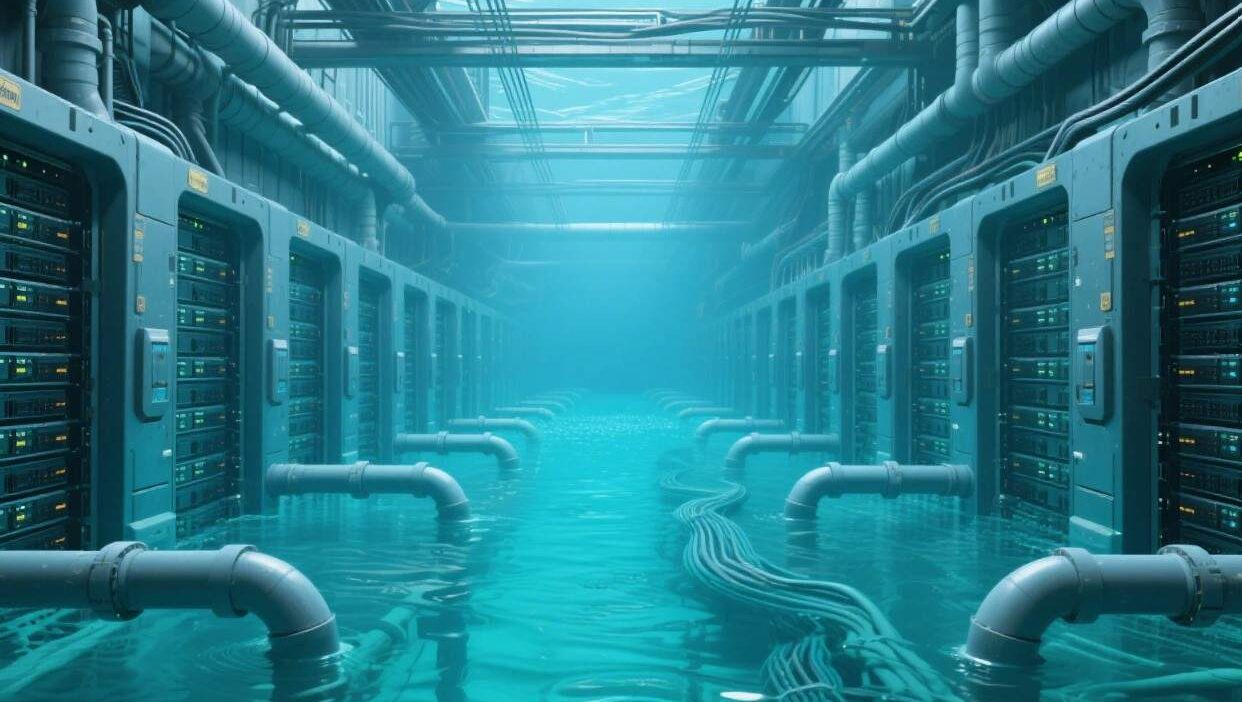Redefining Sustainable Tech Infrastructure
The Data Boom and the Need for Cool Solutions
The digital age is here, and with it, an insatiable appetite for data. Global data traffic is projected to hit 181 zettabytes by 2025—enough to fill 1.8 trillion DVDs. But behind every streaming video, cloud backup, and AI algorithm lies a hidden challenge: keeping data centers cool. Traditional facilities, reliant on energy-hungry air conditioners and freshwater cooling, guzzle 1-3% of global electricity and strain water resources. Enter underwater data centers—a revolutionary leap that uses seawater to cool servers, merging cutting-edge tech with environmental stewardship. This report explores how these subsea facilities are redefining data infrastructure, their benefits, challenges, and the future of sustainable computing.
The Problem with Traditional Data Centers: Heat, Energy, and Waste
Data centers are the backbone of the digital economy, but they’re also energy hogs. A single large facility can consume as much power as 50,000 homes, with cooling accounting for 30-40% of that energy use. Traditional cooling methods—like chillers, fans, and evaporative cooling—are inefficient and resource-intensive:
- High Energy Demand: Chillers run on electricity, often from fossil fuels, contributing to carbon emissions.
- Water Scarcity: Evaporative cooling guzzles freshwater, straining local supplies in drought-prone regions.
- Heat Waste: Most data centers expel hot air into the atmosphere, wasting energy that could be reused.
As global temperatures rise and data demand surges, these inefficiencies are no longer tenable. Enter underwater data centers—powered by seawater cooling—a solution that cuts energy use, conserves water, and taps into the ocean’s vast thermal stability.
Underwater Data Centers: How Seawater Cooling Works
Underwater data centers are submerged facilities—often in coastal or offshore locations—where servers, storage, and networking equipment are housed in pressurized, waterproof enclosures. The star of the show? Seawater cooling systems that replace traditional AC units. Here’s how they work:
1. Heat Transfer: From Servers to Seawater
Servers generate heat as they process data. In underwater facilities, this heat is transferred to seawater via heat exchangers—closed-loop systems where warm water from the data center circulates over cold seawater. The seawater absorbs the heat and is discharged back into the ocean, while the cooled water recirculates to the servers.
2. Thermal Stability of the Ocean
Oceans act as massive heat sinks, with surface temperatures ranging from 2°C (36°F) in polar regions to 30°C (86°F) in tropical zones. This stability ensures consistent cooling, unlike land-based systems that struggle with seasonal temperature swings.
3. Pressurized Enclosures: Surviving the Deep
Servers are housed in fiberglass or titanium-reinforced enclosures designed to withstand extreme pressure (up to 1,000x atmospheric pressure at 1,000 meters depth). These enclosures are sealed to prevent saltwater ingress and corrosion, with filters to remove particulates.
4. Energy Efficiency: No Freshwater, No Chillers
By eliminating chillers and freshwater use, underwater data centers reduce energy consumption by 30-50% compared to land-based facilities. Microsoft’s 2020 trial of an underwater data center off Scotland’s Orkney Islands, for example, achieved 80% energy efficiency—nearly double the industry average.
Benefits: Why Underwater Data Centers Are a Game-Changer
1. Environmental Sustainability
- Reduced Carbon Footprint: By cutting energy use and eliminating freshwater extraction, underwater data centers lower greenhouse gas emissions. A 2023 study by Nature Energy found they could reduce data center emissions by 40% globally by 2030.
- Water Conservation: No freshwater is used for cooling, preserving critical resources for agriculture, drinking water, and ecosystems.
2. Operational Efficiency
- Lower Costs: While initial construction is pricier, operational costs plummet due to reduced energy and maintenance. Over 10 years, underwater facilities can save $100 million+ compared to land-based counterparts.
- Scalability: Ocean space is vast—oceans cover 71% of Earth’s surface—allowing for large-scale deployments without competing with urban land use.
3. Resilience and Reliability
- Cooling Redundancy: The ocean’s thermal mass ensures consistent cooling, even during power outages.
- Reduced Natural Disasters: Underwater facilities are less vulnerable to earthquakes, floods, or wildfires that plague land-based data centers.
Challenges: Overcoming the Deep
While promising, underwater data centers face hurdles:
1. Corrosion and Material Durability
Saltwater is highly corrosive, threatening metal components. Solutions include:
- Corrosion-Resistant Materials: Titanium, fiber-reinforced polymers (FRPs), and specialized coatings (e.g., zinc anodes) to protect enclosures.
- Modular Design: Pre-fabricated, replaceable parts minimize downtime for repairs.
2. Maintenance and Accessibility
Repairing underwater infrastructure is logistically complex. Innovations like:
- Robotic Maintenance: Autonomous drones and submersibles inspect and repair equipment.
- Predictive Analytics: AI monitors sensor data to predict failures, enabling proactive fixes.
3. Environmental Impact
- Biofouling: Marine organisms (e.g., barnacles, algae) can coat heat exchangers, reducing efficiency. Antifouling coatings (e.g., copper-based paints) and periodic cleaning mitigate this.
- Thermal Pollution: Discharging warm water back into the ocean could harm marine life. To address this, facilities use closed-loop systems that recirculate water, minimizing heat discharge.
4. Regulatory and Permitting Hurdles
Oceans are governed by complex international and national laws. Projects require permits for marine spatial planning, environmental impact assessments, and cable installation—delays that can add years to deployment.
Real-World Examples: Pioneering the Subsea Revolution
- Microsoft’s Project Natick: Launched in 2018, Microsoft deployed a 40-foot underwater data center off Scotland’s Orkney Islands. Fueled by offshore wind energy and cooled by seawater, it achieved 80% energy efficiency and 99.9% uptime. After two years, the center was retrieved, and its servers showed minimal corrosion—validating the technology.
- Subsea Cloud: This startup is building modular underwater data centers using 3D-printed titanium enclosures. Its first facility, off the coast of Norway, uses seawater cooling and integrates with offshore wind farms for power.
- OceanWorks: A joint venture between Lockheed Martin and Singapore’s ST Engineering, OceanWorks is developing underwater data centers for defense and commercial use, leveraging the U.S. Navy’s experience with subsea systems.
The Future: Underwater Data Centers as a Cornerstone of Green Tech
The future of underwater data centers is bright, with innovations on the horizon:
- AI-Optimized Cooling: Machine learning algorithms will dynamically adjust cooling based on real-time heat loads, boosting efficiency by 20-30%.
- Hybrid Energy Systems: Pairing underwater data centers with offshore wind, wave, or tidal energy could make them 100% renewable.
- Underwater Networking: High-speed fiber-optic cables will connect subsea facilities to coastal cities, reducing latency for users.
- Circular Economy Integration: Waste heat from data centers could warm nearby communities or power desalination plants, creating a closed-loop system.
Cooling the Future, One Submerged Server at a Time
Underwater data centers powered by seawater cooling are more than a technological novelty—they’re a lifeline for a sustainable digital future. By solving the cooling crisis, reducing carbon emissions, and conserving resources, these facilities pave the way for a world where data growth and environmental stewardship go hand in hand.
As the first commercial underwater data centers come online and innovation accelerates, one thing is clear: the ocean is no longer just a source of life—it’s becoming a cornerstone of our digital infrastructure.



